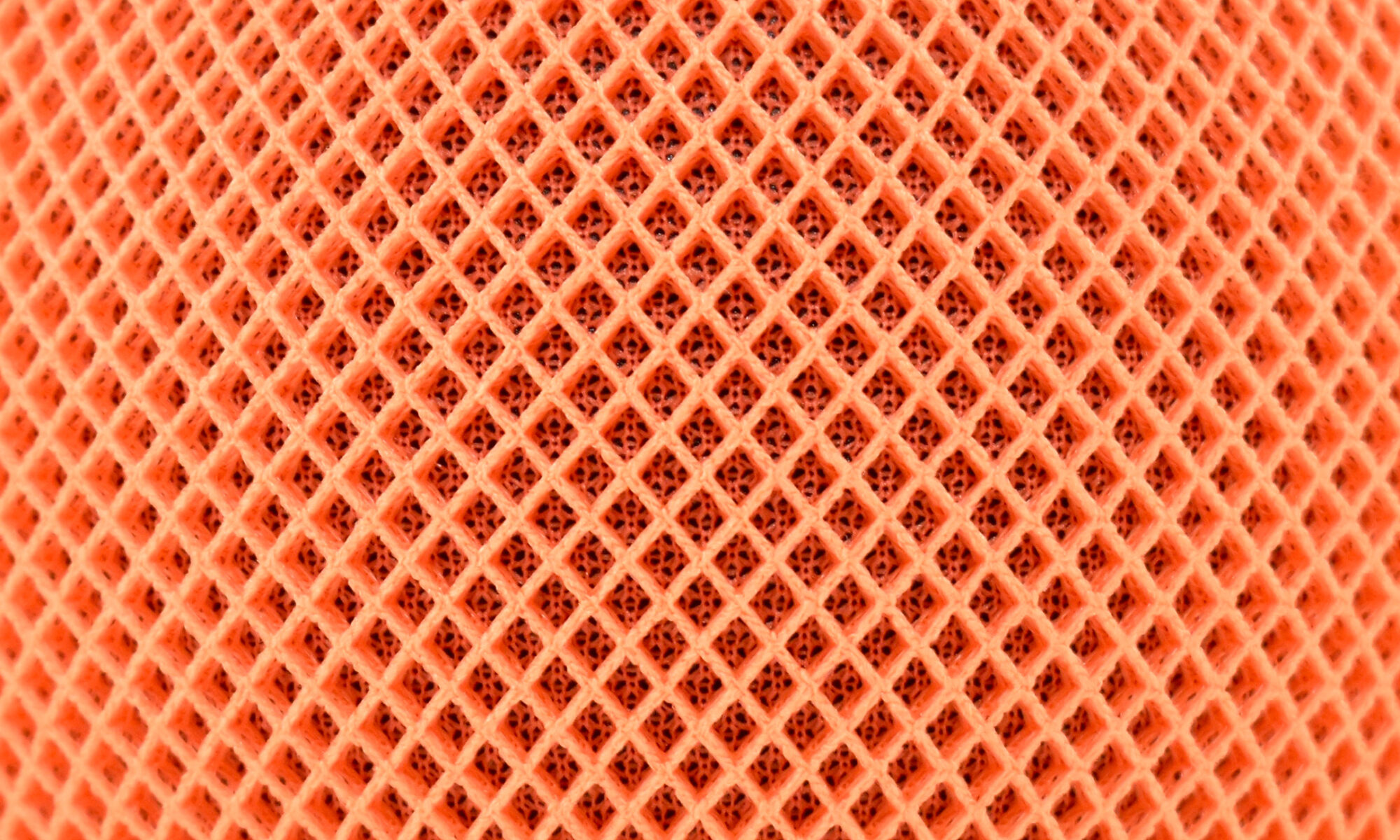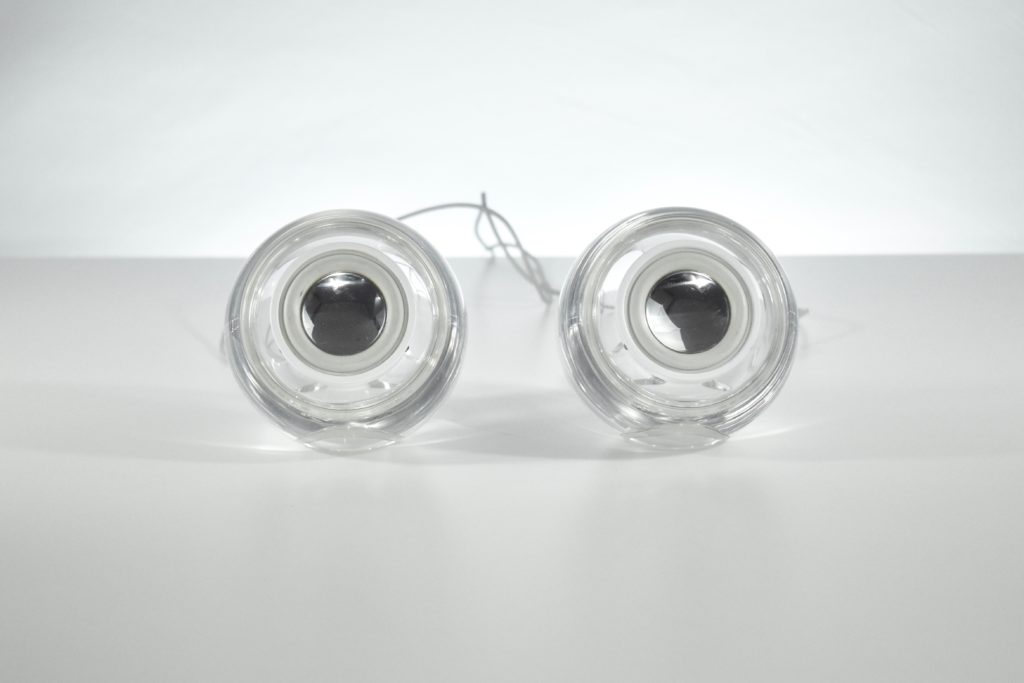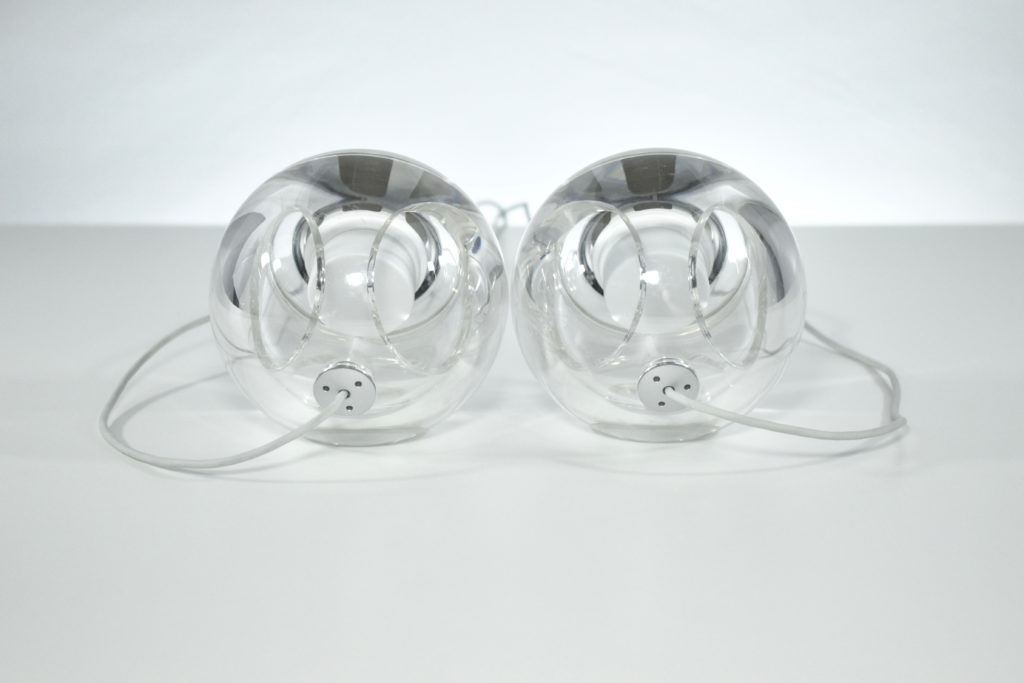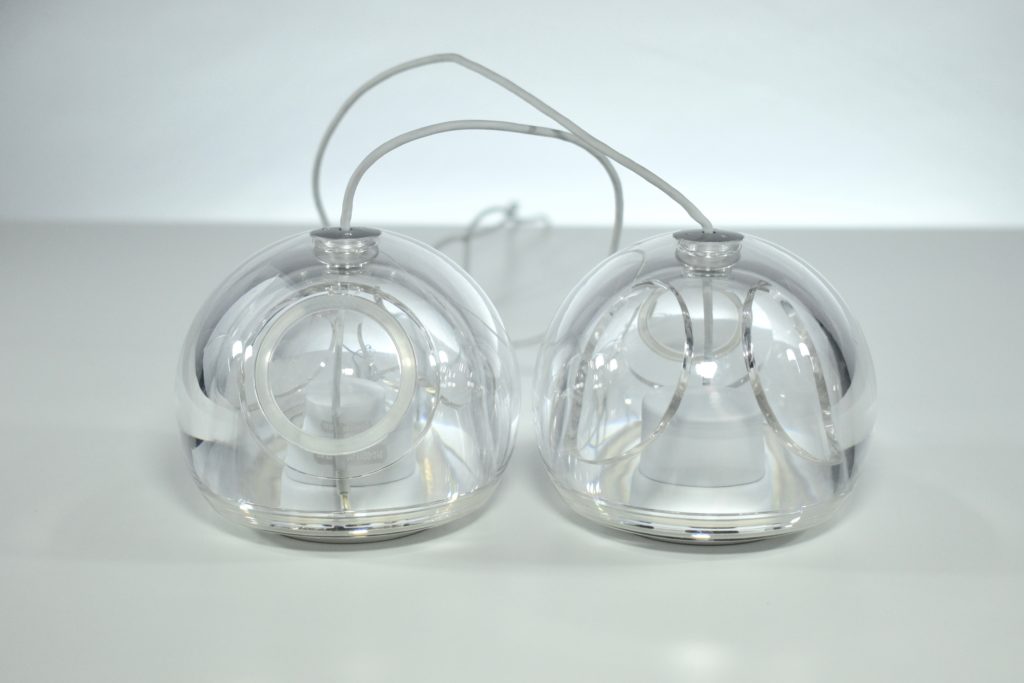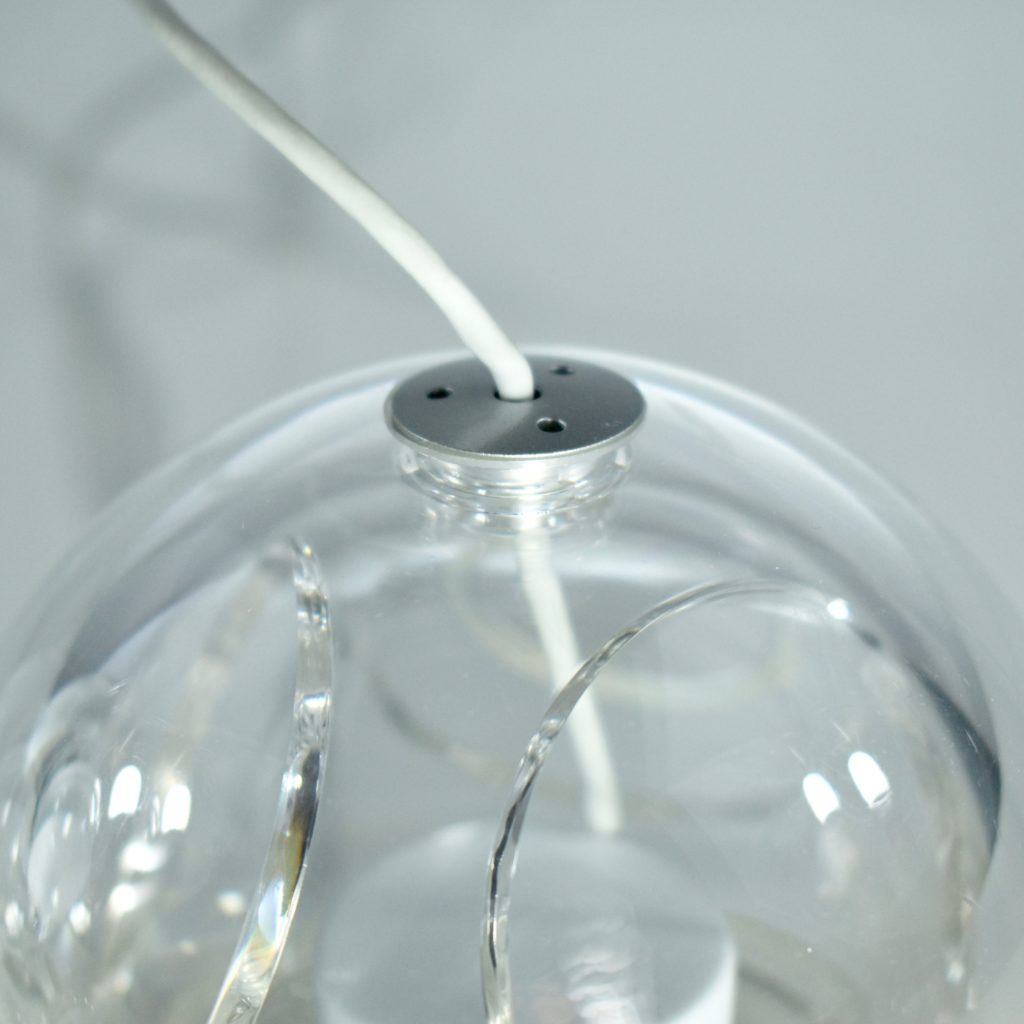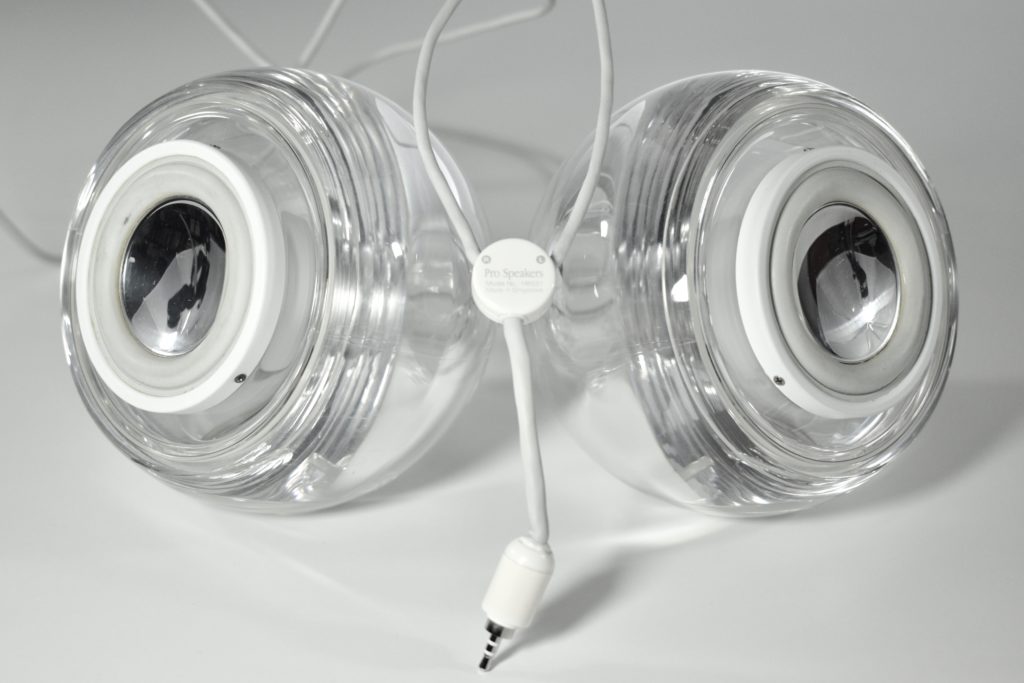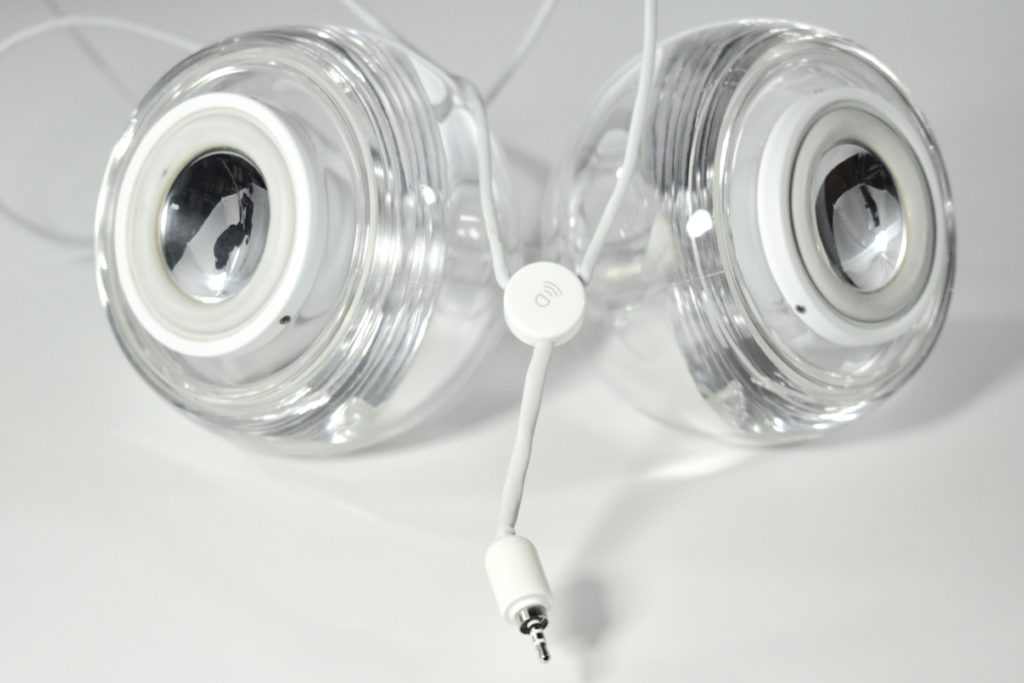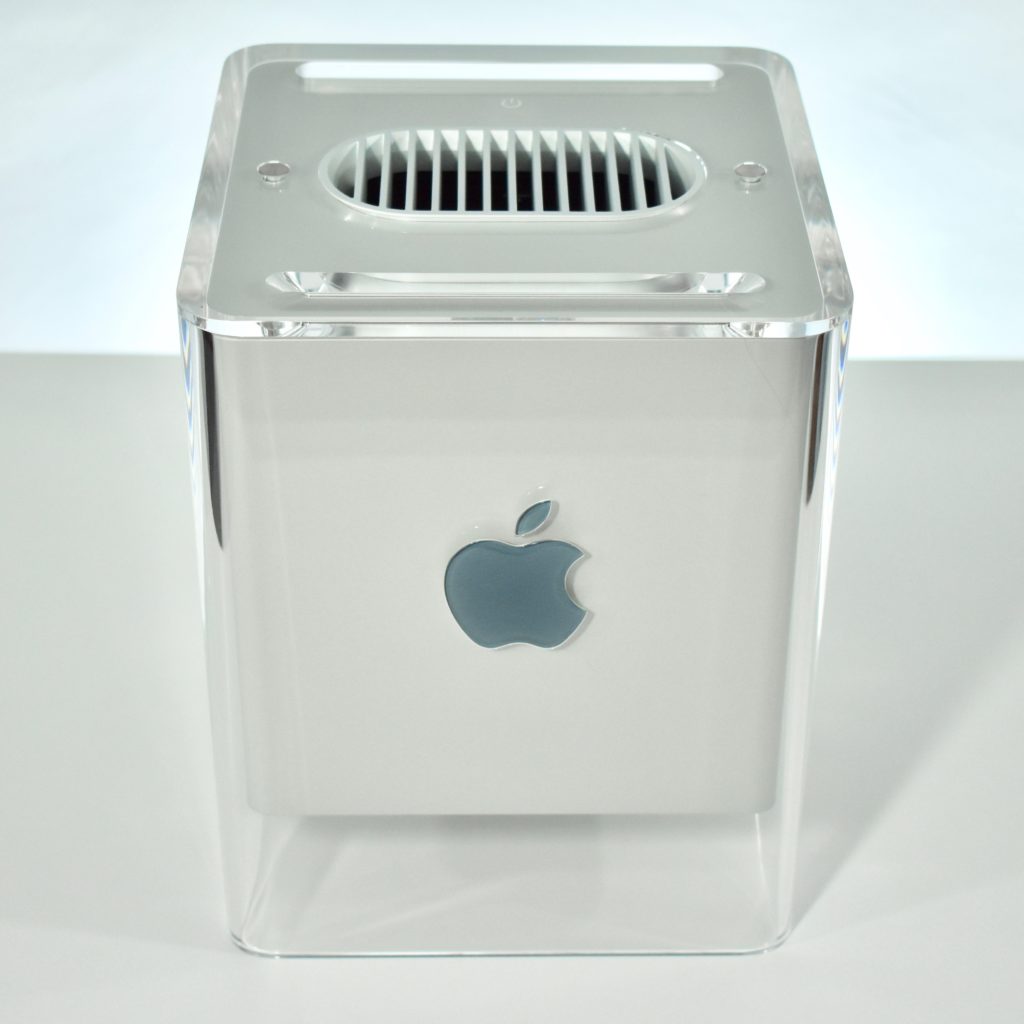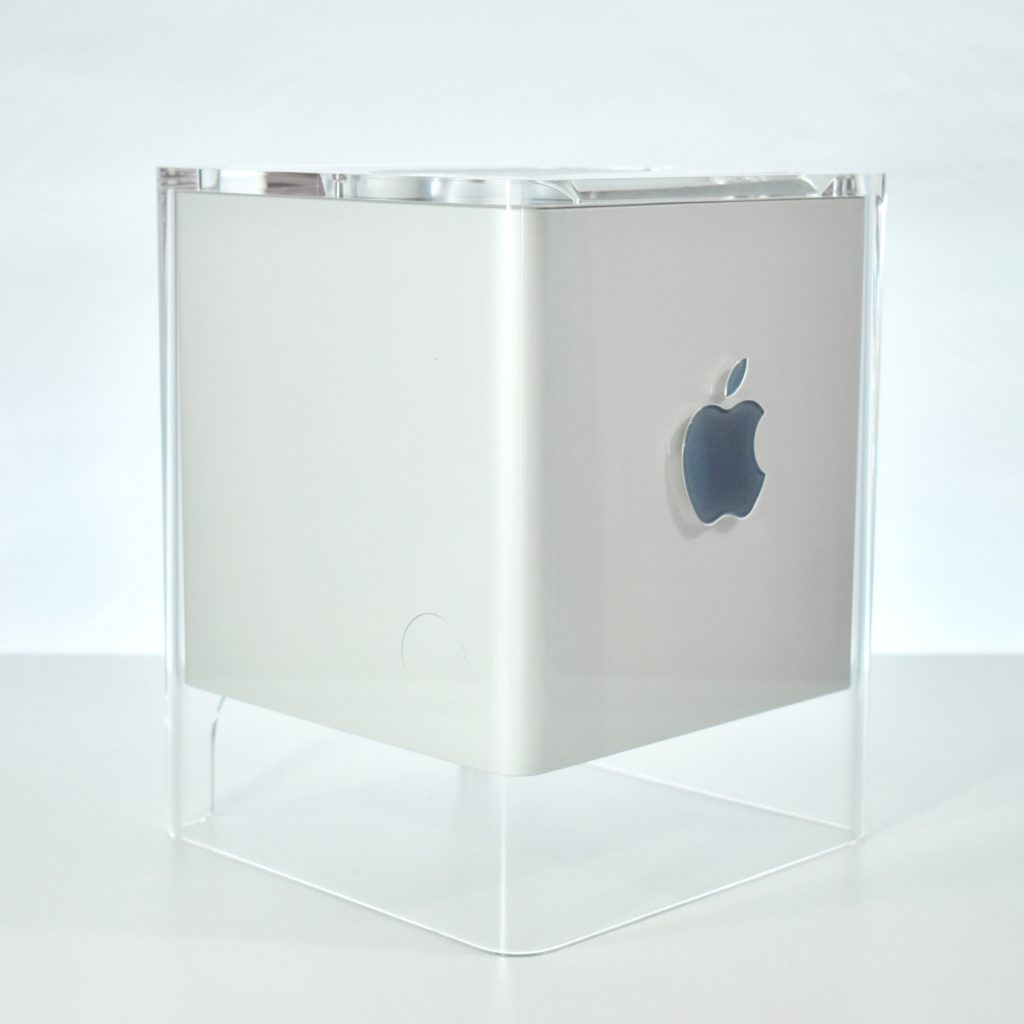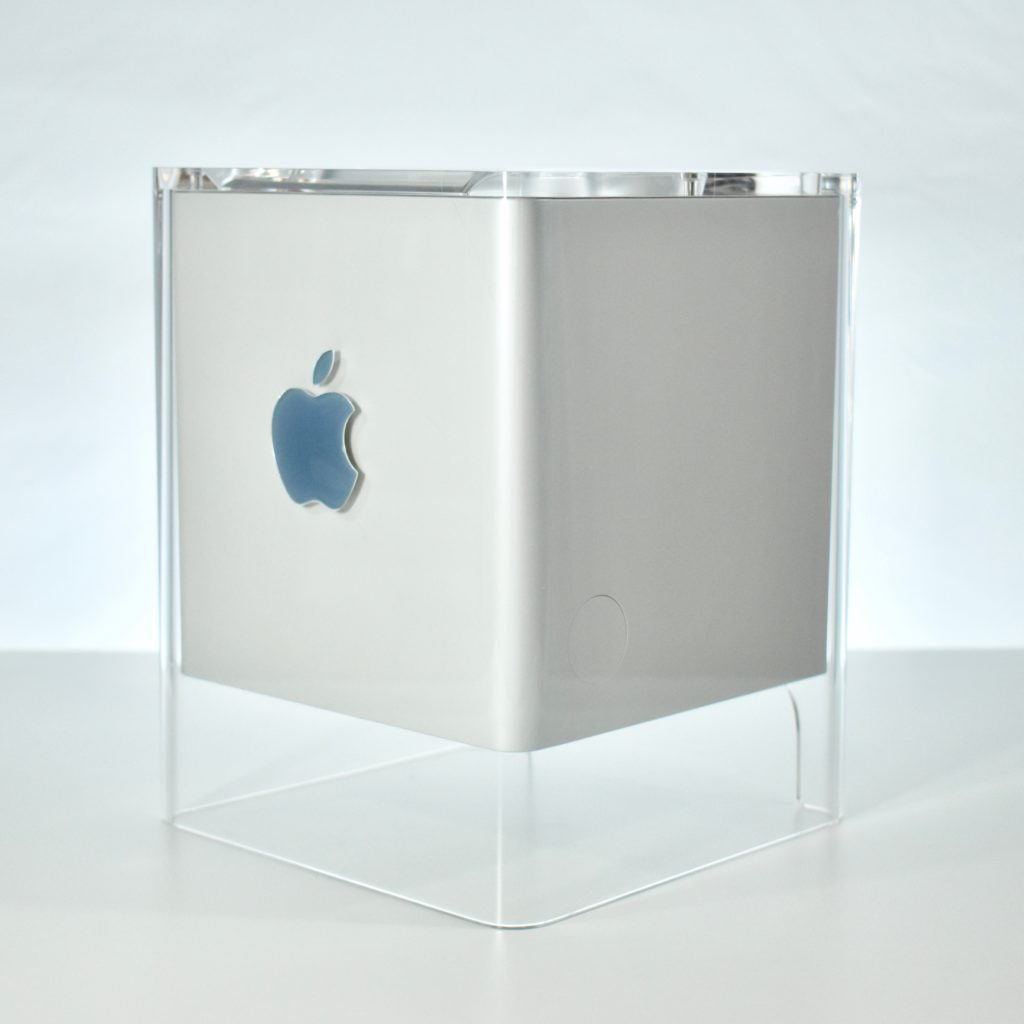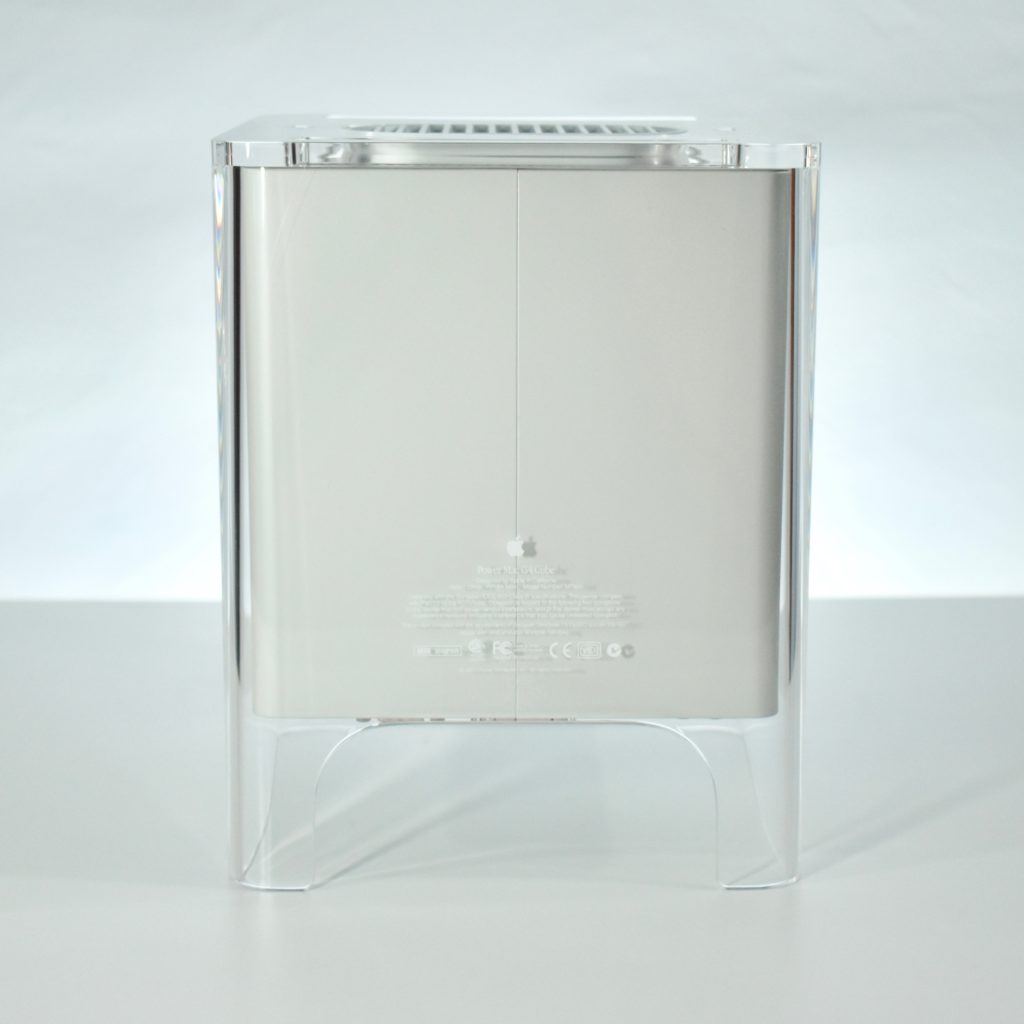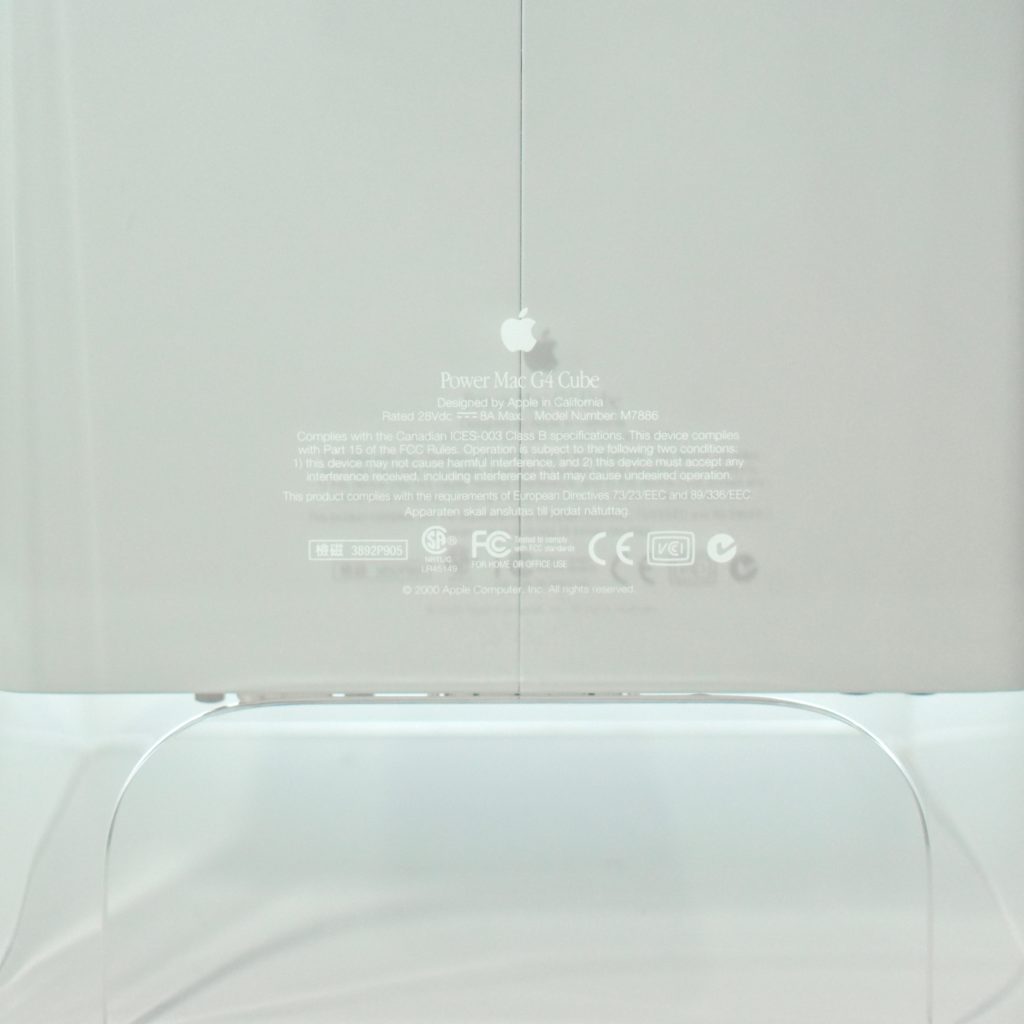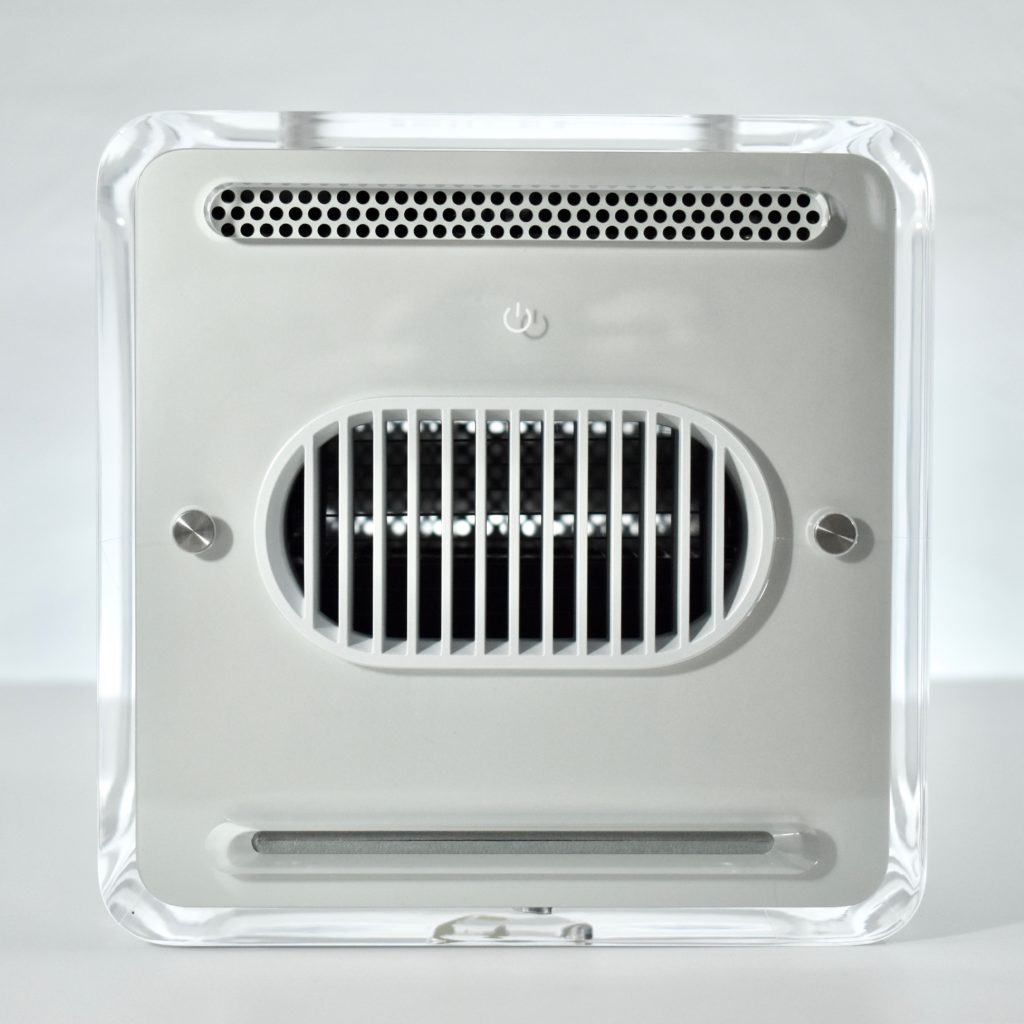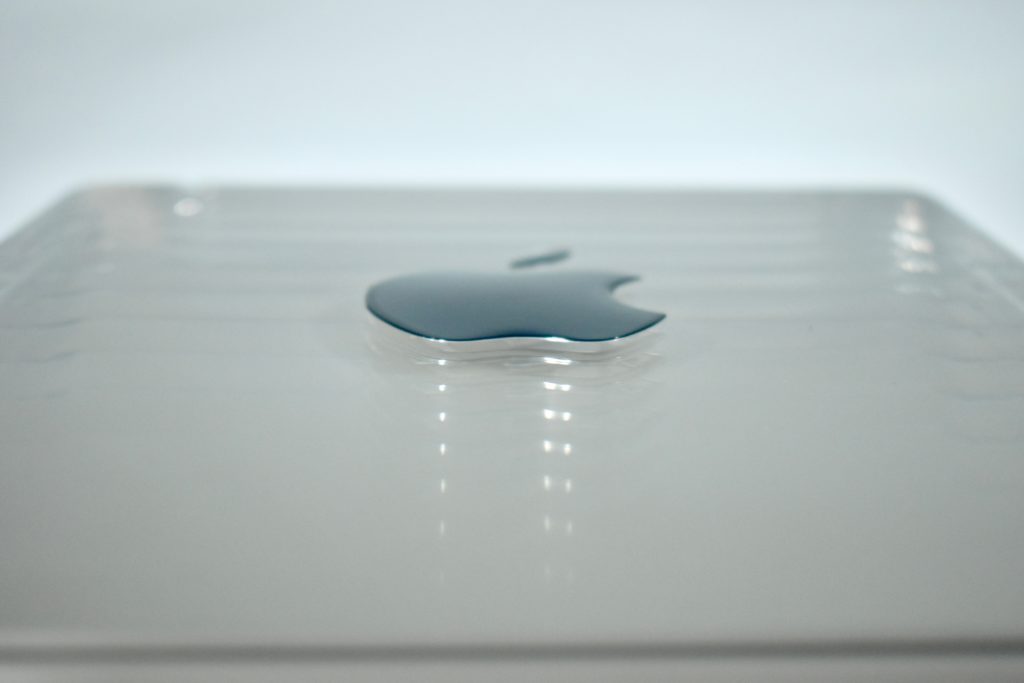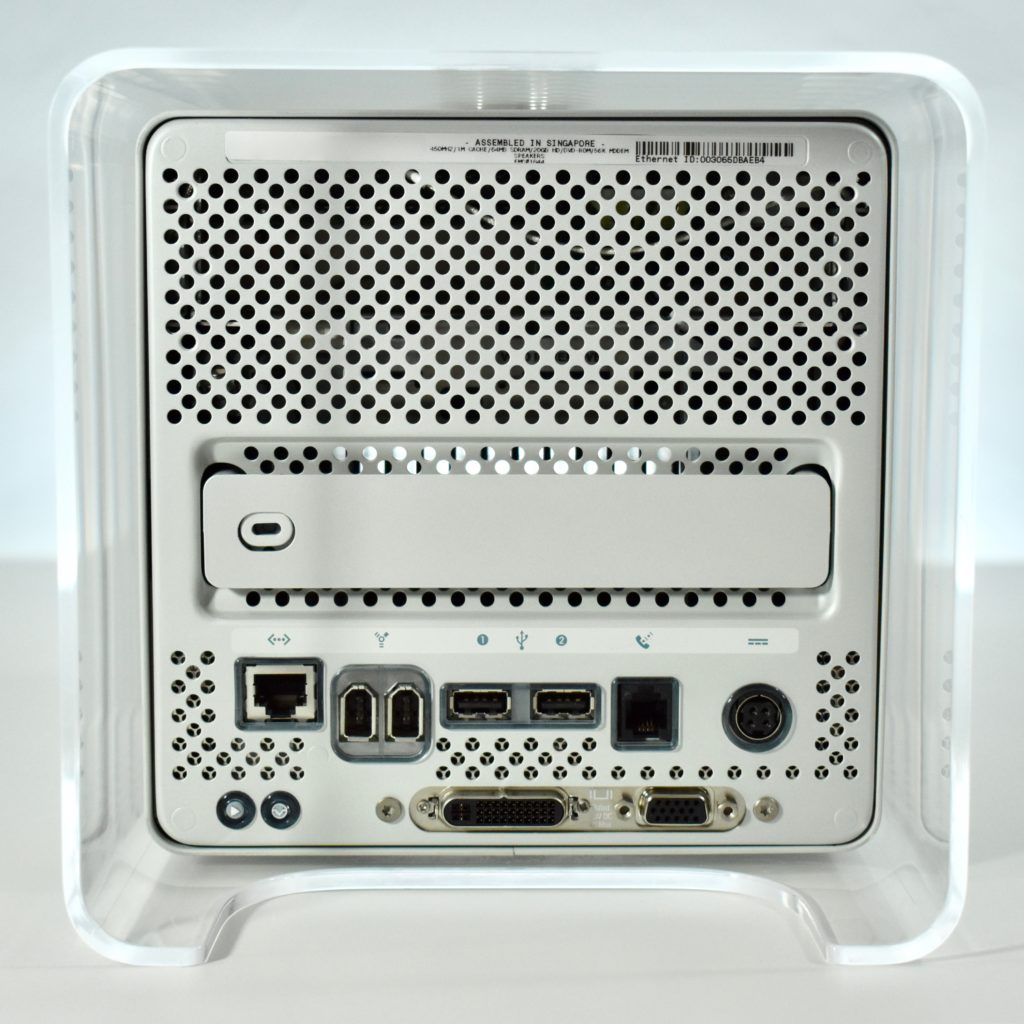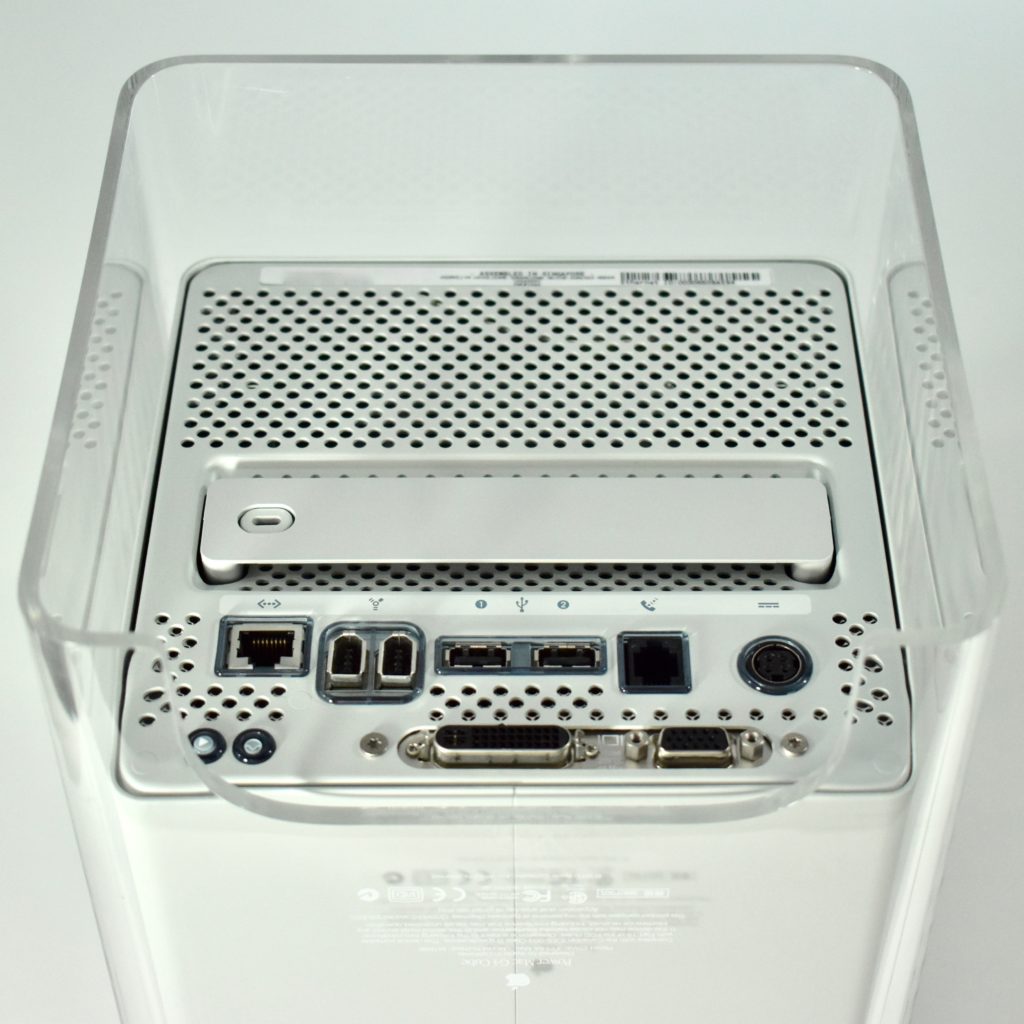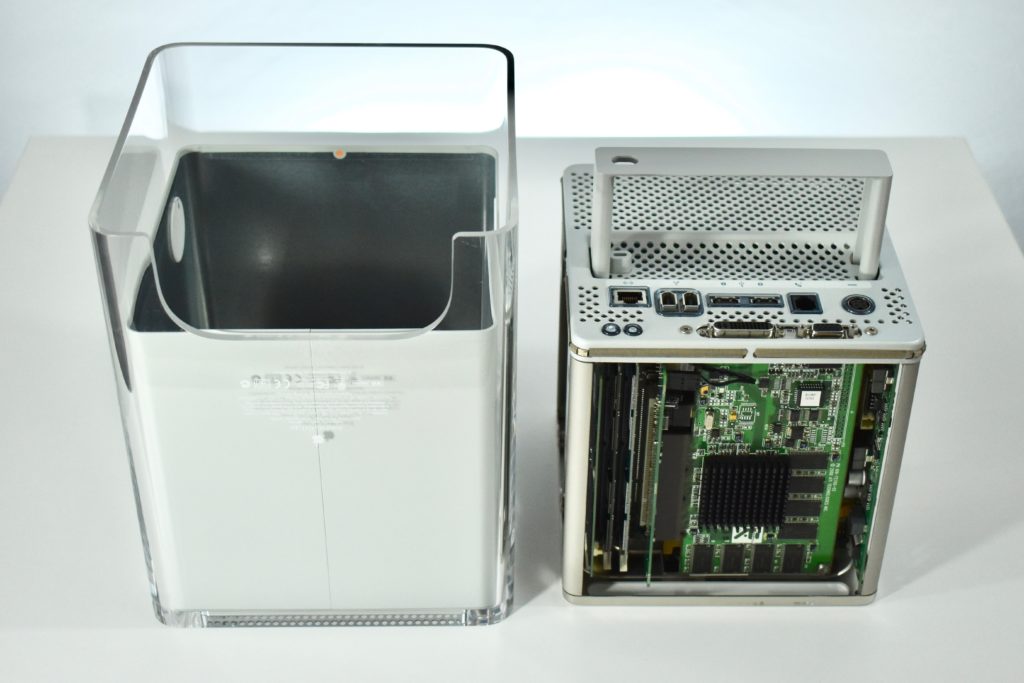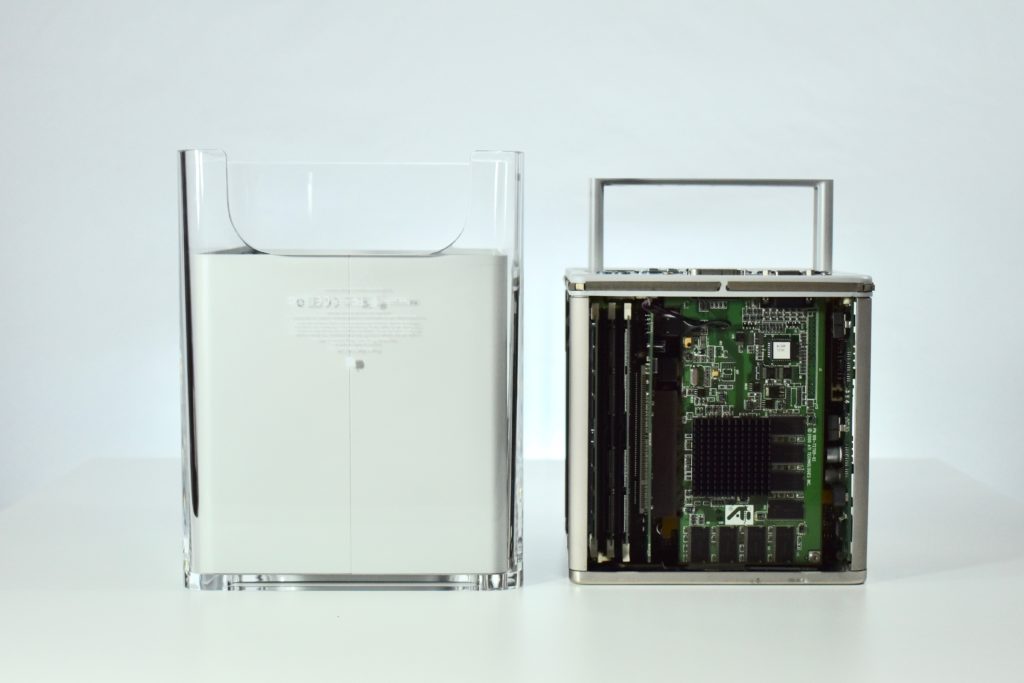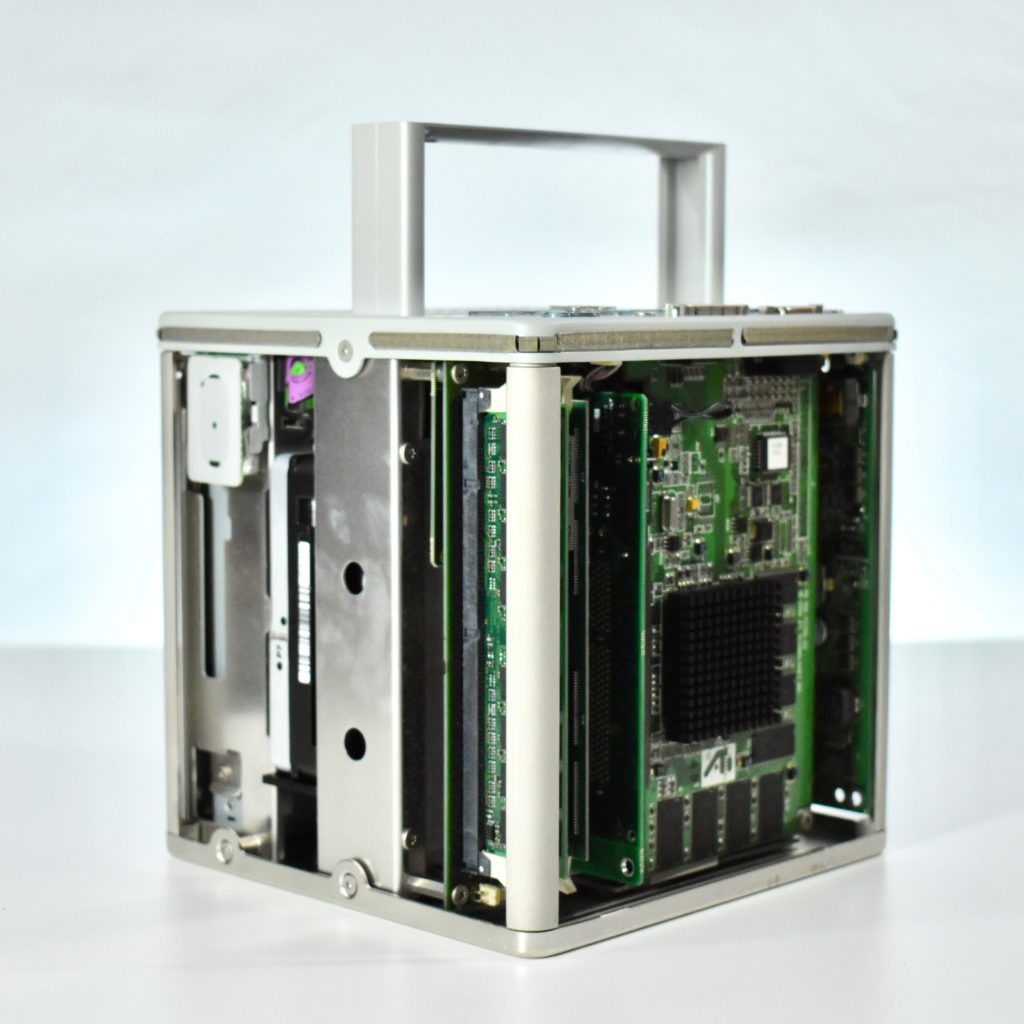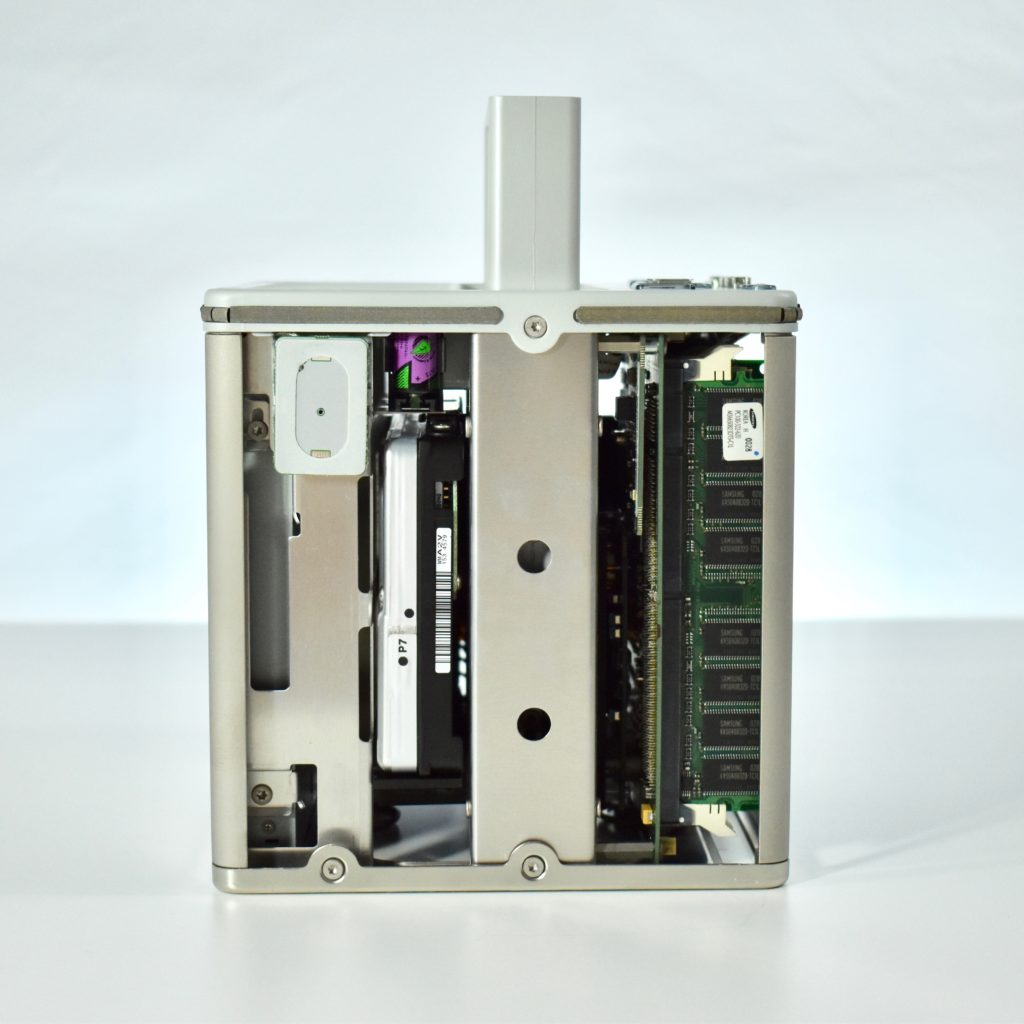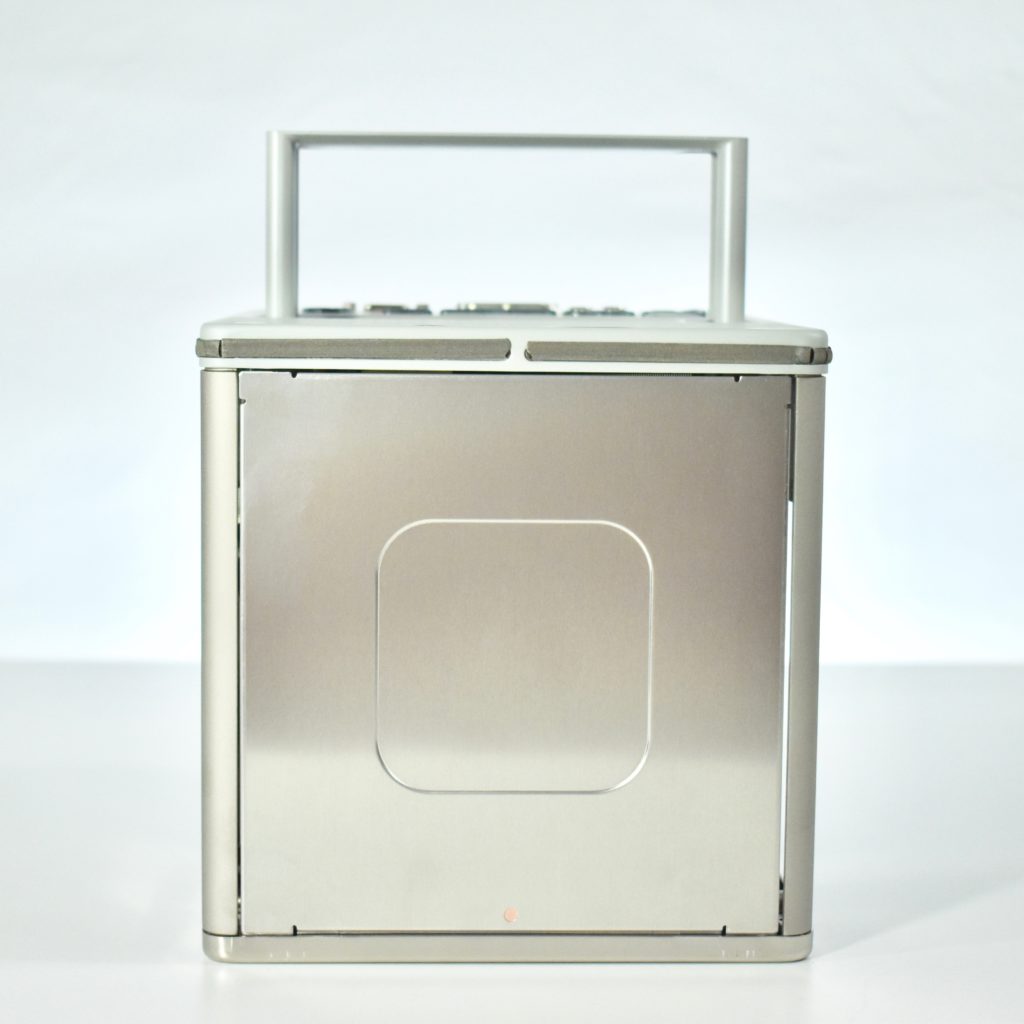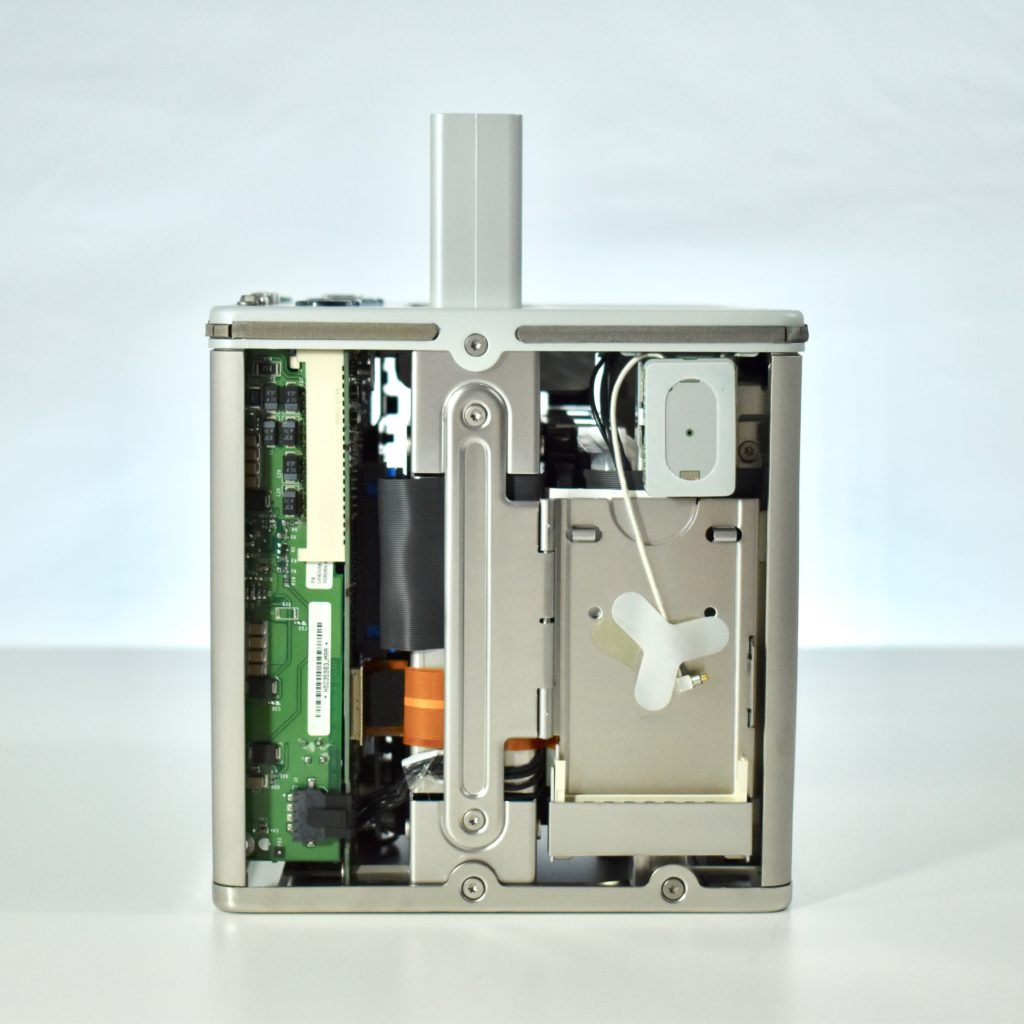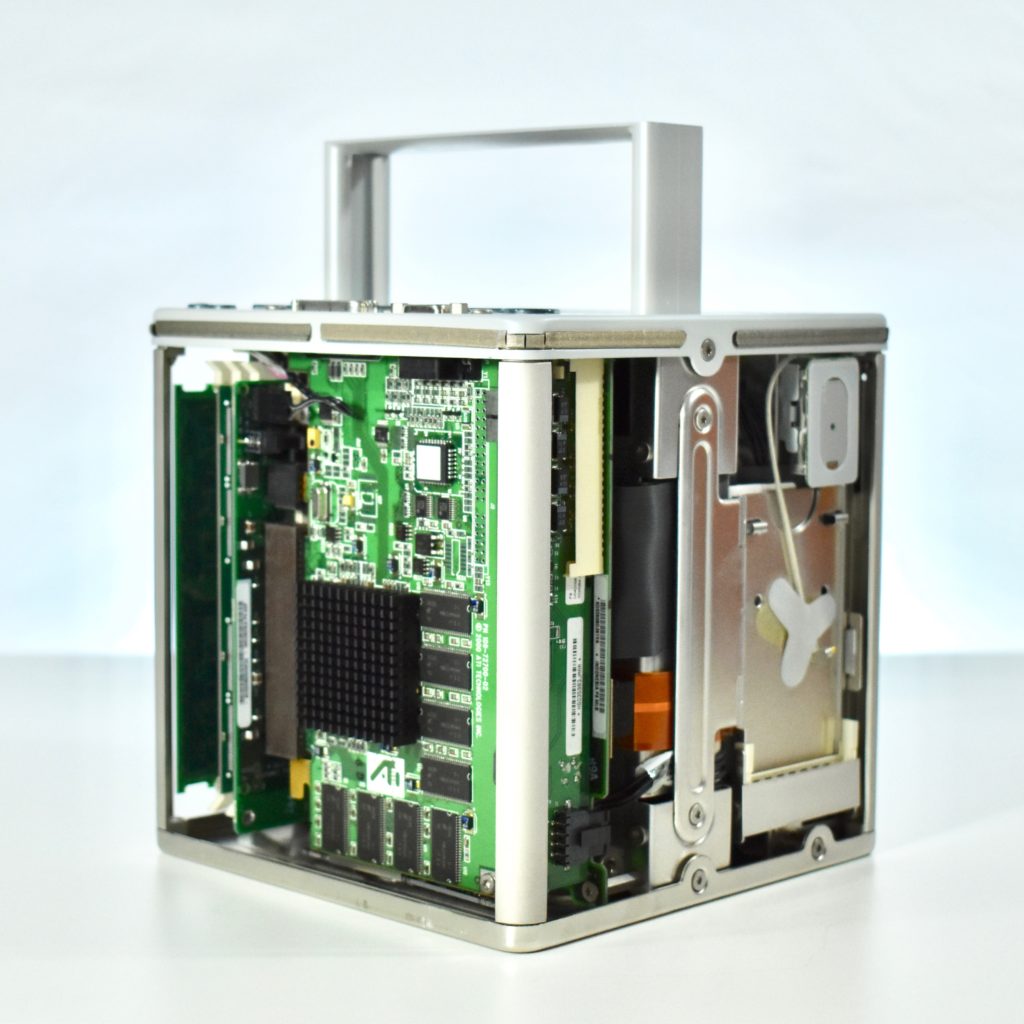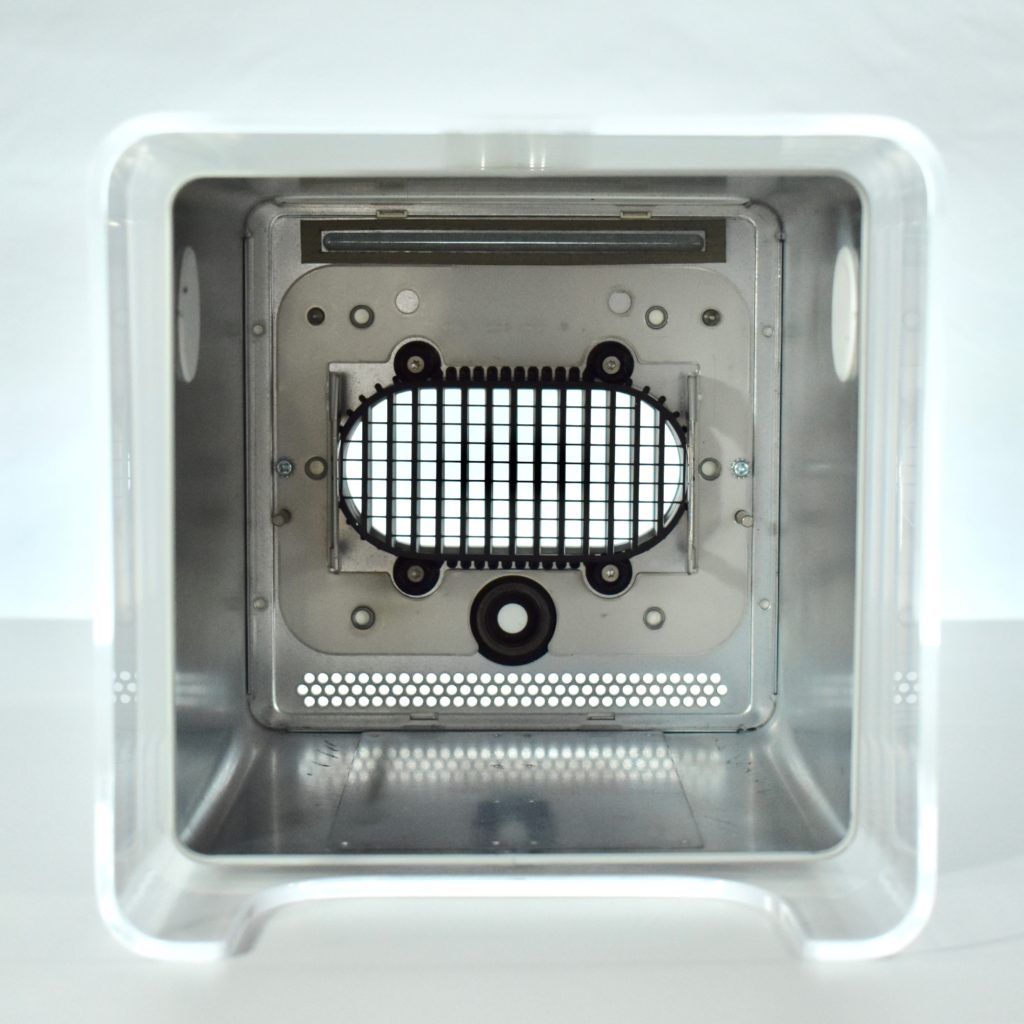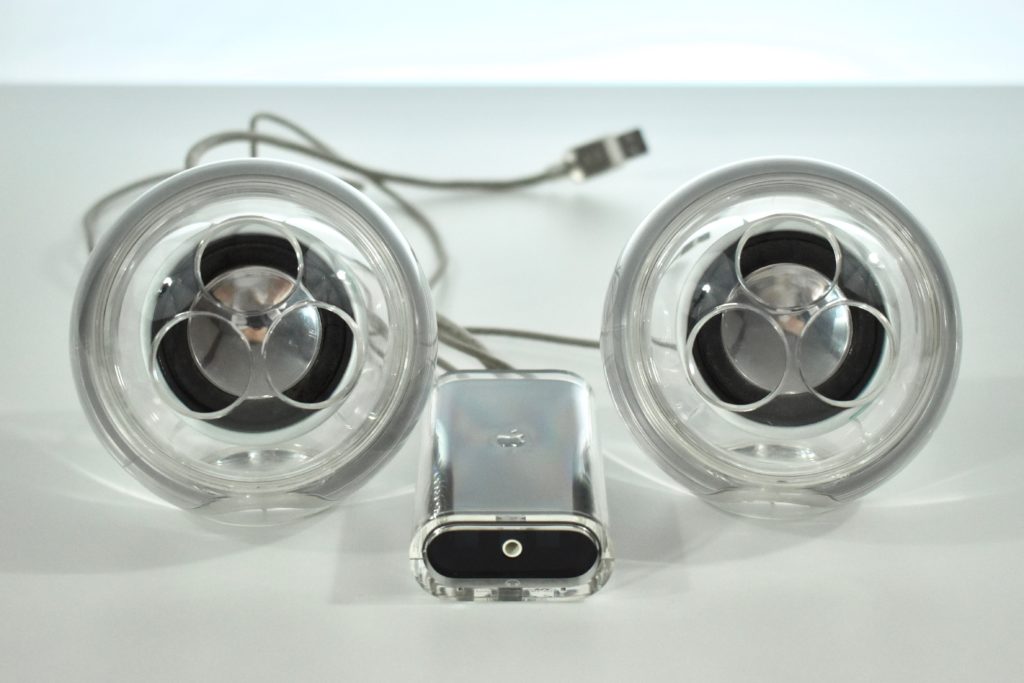The Power Mac G4 Cube featured a 450 MHz G4 processor, 64 MB of RAM, a 20 GB Ultra ATA/66 hard drive, a slot-loading 5X DVD-ROM drive, and supported an AirPort 802.11b wireless card. Two other configurations were available, but this is an original model.
The G4 Cube is known for its size and design. The computer is 7.7-by-7.7-by-7.7 inches, but sits inside a clear acrylic base that overall is 9.8 inches tall. The Cube is the only Mac to ship without an internal speaker. Instead, it shipped with USB-powered spherical speakers designed by Harman Kardon. The USB audio amplifier had a standard mini-plug headphone jack, but no audio input.
Built-in ports included two FireWire 400 ports and two USB 1.1 ports. The Cube used a silent, fanless, convection-based cooling system similar to the cooling system used in iMac computers at the time.
The New York Museum of Modern Art (MoMA) holds a G4 Cube in their collection, listing Jonathan Ive and the Apple Industrial Design Group as the artists/designers of the work.
I used the first G4 Cube I acquired as my home iTunes server. Since it had no audio-out port, I used a USB dongle to add a 3.5mm headphone jack which I split to left/right RCA plugs to connect to my analog stereo amplifier. I used a connected 15-inch Apple Studio Display to control the Cube. The Mac mini replaced the Cube a few years later as my home media computer.
Source: EveryMac.com, Wikipedia.com, MoMA.com
